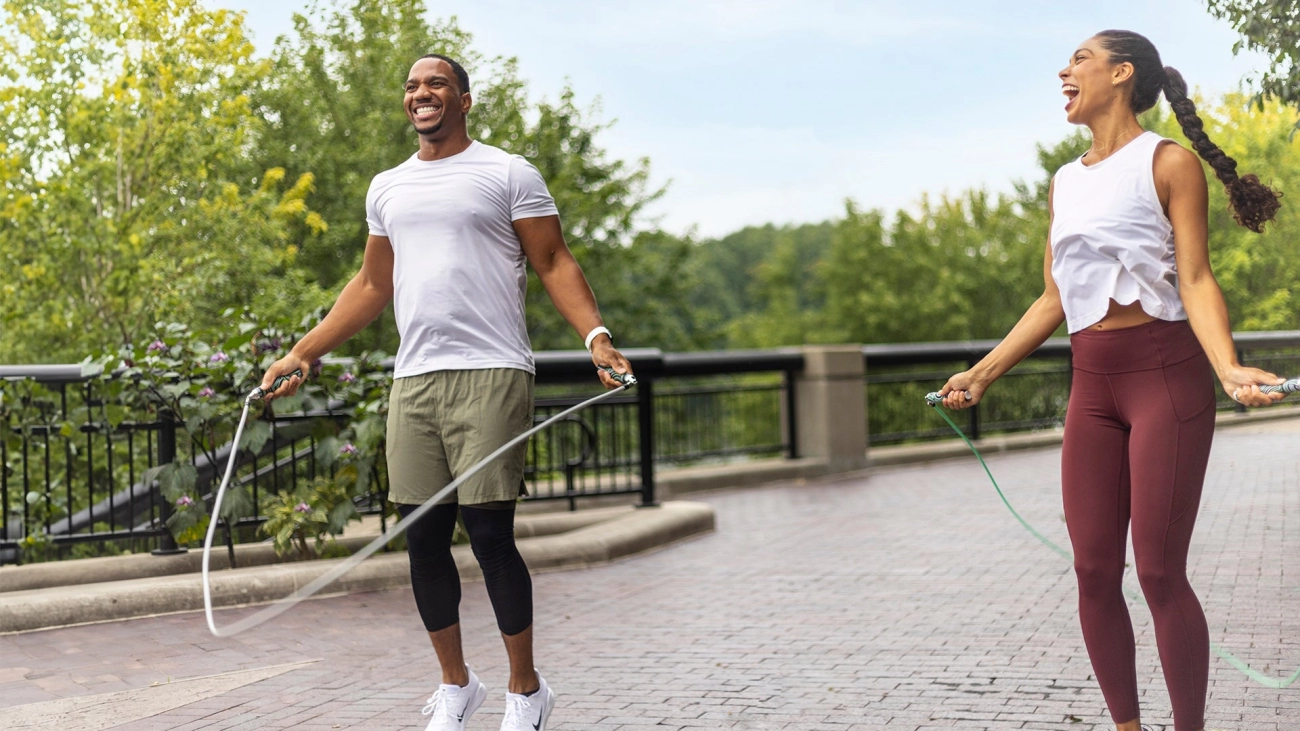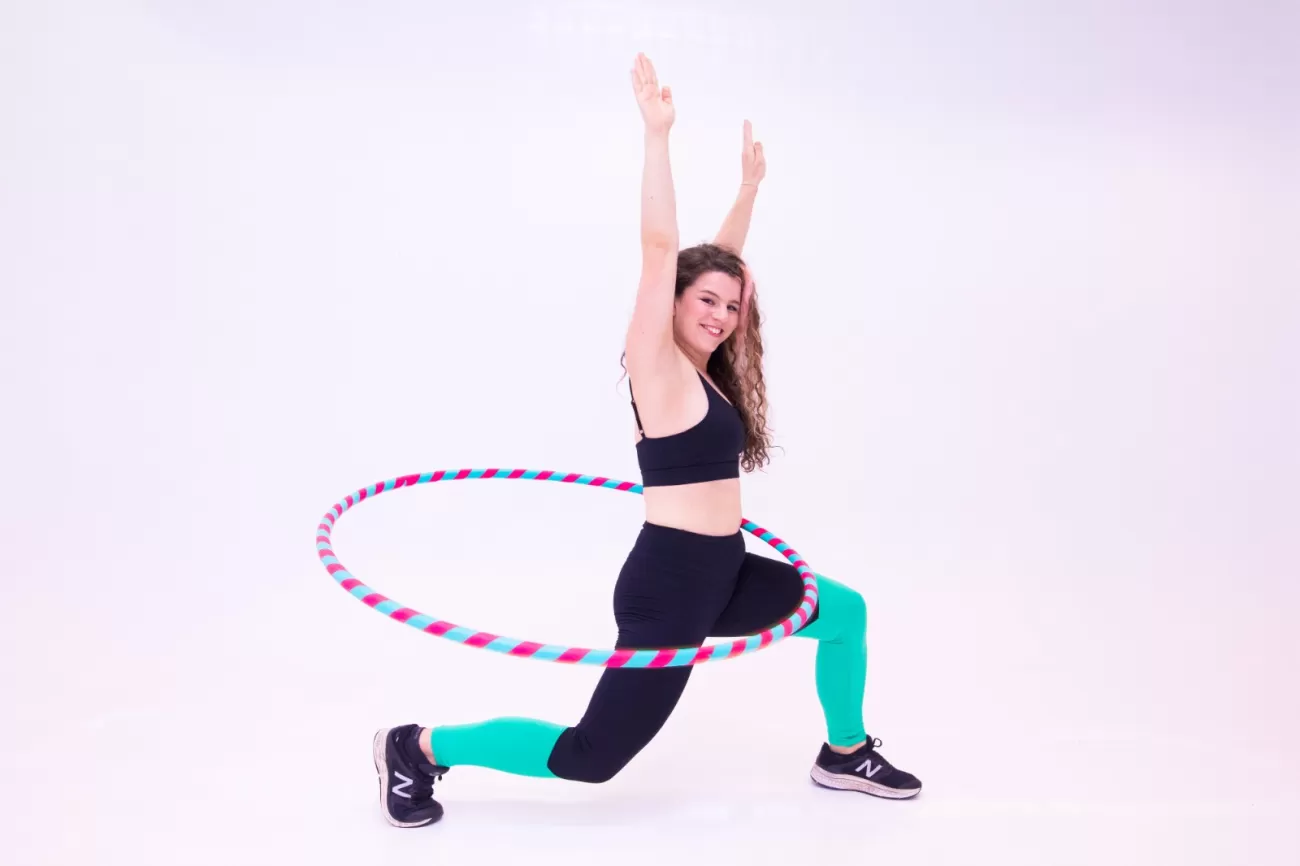Why Choose Skipping Rope for Your Workout
Skipping rope is one of the most effective and beginner-friendly fitness activities available. Whether you’re starting a new jump rope exercises for beginners routine or looking for an efficient skip rope cardio routine, there are several reasons why this simple tool stands out.
Accessibility with Minimal Equipment and Space
- Affordable and compact – A skipping rope requires minimal investment compared to gym memberships or bulky fitness equipment.
- Small footprint – Use it in tight spaces at home, in the park, or while traveling, making it perfect for any lifestyle.
- Easy to carry – Lightweight and portable, so you can maintain your workout routine anywhere.
Efficiency for Burning Calories and Time-Saving Cardio
- High calorie burn – Skipping rope can burn up to 10-16 calories per minute, making it one of the most calorie-efficient workouts for beginners.
- Effective cardio – Quickly raises your heart rate, improving cardiovascular health in less time than many other aerobic exercises.
- Time-efficient – Short sessions deliver a meaningful calorie burn, ideal for busy schedules.
Versatility for Indoor Outdoor Use and Adaptable Intensity
- Use indoors or outdoors – Perform your skipping rope workout on any flat surface, inside your home gym or outside in the fresh air.
- Adjustable intensity – Modify your speed, jump height, or rope type to suit your fitness level and goals, from gentle steps to vigorous cardio bursts.
- Variety of workouts – Incorporate different jump techniques to keep your routine fresh and challenging.
Improves Coordination Agility and Endurance
- Enhances motor skills – Jumping rope refines hand-eye coordination and timing, crucial for overall movement efficiency.
- Boosts agility – Fast footwork and quick changes in rhythm enhance your ability to move dynamically in daily activities or sports.
- Builds endurance – Regular skipping sessions increase stamina by strengthening your cardiovascular system and leg muscles.
Choosing a skipping rope workout is not just about cardio; it’s an all-around body-conditioning activity that fits seamlessly into any beginner fitness plan. Its accessibility, efficiency, versatility, and benefits for coordination and endurance make it an ideal choice to jumpstart your exercise journey.
Essential Equipment Choosing the Right Skipping Rope for Beginners
Picking the right skipping rope is key to getting started with jump rope exercises for beginners. There are a few types of ropes to consider, each suited for different workout goals and skill levels:
- Speed Ropes: Lightweight and thin, perfect for fast jumping and improving coordination.
- Weighted Ropes: Heavier ropes that build strength and endurance but may be harder for beginners.
- Adjustable Length Ropes: Best for beginners because you can easily customize the length for your height and comfort.
Rope Length and Handle Grip for Beginners
Choosing the right rope length is crucial. A rope that’s too long or short can make skipping frustrating or unsafe. To check if your rope fits:
- Stand on the middle of the rope
- Pull handles straight up along your sides
- The handles should reach about chest height
Also, look for comfortable grips that feel secure in your hands without slipping. Soft rubber or foam handles can reduce hand fatigue during longer sessions.
Why JumpRopeWholesale Ropes Stand Out
Investing in high-quality ropes from JumpRopeWholesale makes a big difference in your skipping routine. Their ropes offer:
- Durability: Made with tough materials that withstand regular use indoors or outdoors.
- Comfort: Ergonomic handles designed for a strong, comfortable grip.
- Adjustability: Many models allow you to easily modify the length, perfect for growth or sharing with family.
These qualities translate to fewer interruptions and more enjoyable jump rope cardio routines—important for beginners staying motivated.
Safety Gear Recommendations
While not mandatory, some safety gear can improve your experience:
- Comfortable athletic shoes with good cushioning to protect your ankles and knees.
- Wristbands or gloves if you plan extended sessions to prevent blisters.
- Optional knee or ankle supports if you have joint concerns.
Starting with the right equipment sets you up for success in your beginner jump rope workout plan and reduces the chance of injury. JumpRopeWholesale offers a solid range to match your needs and keep you moving safely.
Warm Up and Stretching Tips Before Your Skipping Rope Workout
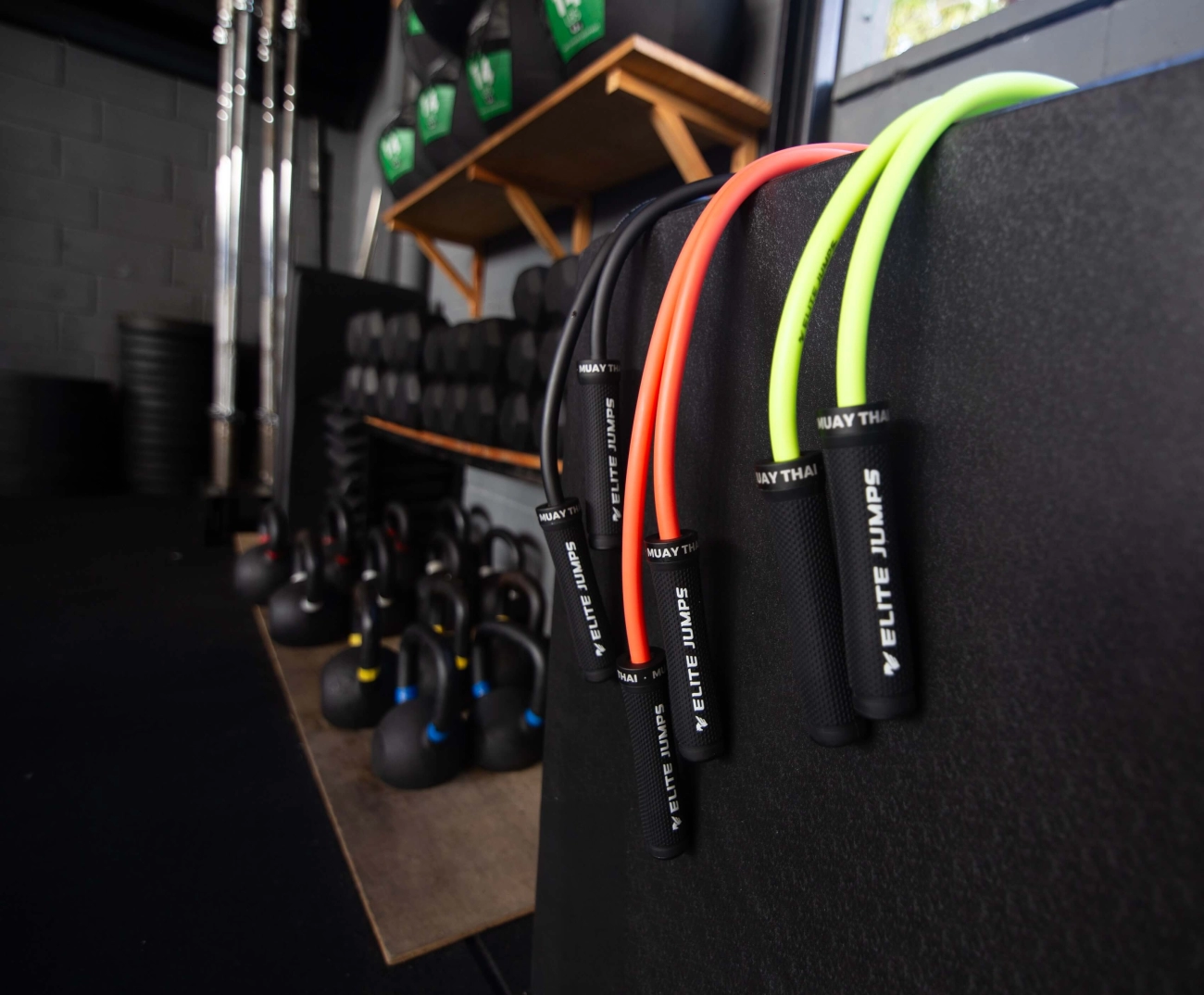
Warming up is crucial before starting any jump rope exercises for beginners. It helps increase blood flow, prepares your muscles and joints, and significantly reduces the risk of injury. Skipping rope engages different parts of your body, especially ankles, calves, wrists, and shoulders, so focusing your warm-up on these areas is key.
Simple Warm Up Exercises for Skipping Rope Beginners
Before you grab your rope, spend 5 minutes doing these easy warm-up moves:
- Ankle Circles: Rotate each ankle 10 times clockwise and 10 times counterclockwise to loosen joints.
- Calf Raises: Stand on your toes and lower back down slowly, repeat 15 times to activate calves.
- Wrist Rolls: Roll your wrists clockwise and counterclockwise 10 times to prevent strain while turning the rope.
- Shoulder Shrugs and Rolls: Lift shoulders up and down and then gently roll them back and forward 10 times each to ease tension.
Recommended Stretching Routine Before and After Your Skipping Cardio Routine
Stretching helps maintain flexibility and aids recovery whether you’re just starting or have been skipping for a while. Prior to skipping, stick to gentle stretches that don’t overstretch cold muscles:
-
Pre-Workout Stretching
Calf Stretch: Place one foot behind the other, keep back leg straight and heel on the ground, lean forward slightly. Hold 20 seconds per side.
Wrist Flexor Stretch: Extend one arm straight, palm up, with the other hand gently pulling fingers down toward the floor. Hold for 15 seconds each hand.
Shoulder Cross-Body Stretch: Pull one arm across your chest using the other hand. Hold for 20 seconds per side.Post-Workout Stretching
After your skipping workout, do deeper stretches focusing on muscles that were active. This helps reduce soreness and stiffness. Add a quad stretch, hamstring stretch, and some gentle lunges to fully loosen up your legs.
To get the most out of your beginner skipping rope workout plan, remember:
- Always warm up to prepare your ankles, calves, wrists, and shoulders.
- Use dynamic warm-up exercises before jumping rope.
- Follow with proper stretching before and after your routine to prevent injuries and boost recovery.
These simple steps will keep you safe, improve your skipping rope cardio routine, and help you enjoy your journey to better fitness.
Mastering the Basics Beginner Skipping Rope Workout
Getting the fundamentals right is key to enjoying your skipping rope workout and avoiding injuries. Here’s how to skip rope properly with cardio-friendly jump techniques, good posture, and breathing tips.
Proper Posture and Hand Position
- Stand tall with a slight bend in your knees — this helps absorb impact and keeps you flexible.
- Keep your elbows close to your body, holding the rope handles lightly but firmly.
- Use your wrists to turn the rope, not your entire arms. This saves energy and improves control.
- Look straight ahead, not down at your feet, to maintain balance and good form.
Cardio Friendly Jump Techniques
Start with simple, low-intensity moves that match a beginner skipping rope workout plan:
- Two Foot Bounce: Jump with both feet together just high enough to clear the rope. This is the easiest way to get your rhythm.
- Alternate Foot Step: Mimics jogging in place, lifting one foot at a time. It’s lighter on your joints and adds variety.
- Single Bounce Jumps: One jump per rope turn. Keep these smooth and controlled to avoid tripping.
Mix these steps to build endurance and keep your workout interesting.
Common Beginner Mistakes and How to Avoid Them
- Jumping too high — Keep your jumps low (1 to 2 inches) to prevent fatigue and injury.
- Landing hard on your heels — Land softly on the balls of your feet to reduce joint stress.
- Tight grip on handles — Holding too tight tires your wrists fast. Relax your grip.
- Swinging your arms too much — Focus on wrist movement rather than full arm swings.
- Skipping at uneven pace — Start slow and build rhythm before picking up speed.
By keeping these points in check, you’ll have a smoother, more efficient workout.
Breathing Techniques During Skipping
- Breathe rhythmically and deeply to maintain good oxygen flow and stamina.
- Inhale through your nose, exhale through your mouth for steady breathing.
- Match your breath to your jumps (for example, inhale for two jumps, then exhale for two).
- Avoid holding your breath; staying relaxed helps you last longer and skip more efficiently.
Mastering these basics sets a solid foundation for your beginner jump rope workout plan and helps you build coordination, endurance, and confidence. For more on adjusting rope lengths and choosing the right gear, check out how long should a skipping rope be and our beginner-friendly good skipping rope routine.
Beginner Skipping Rope Workout Routine
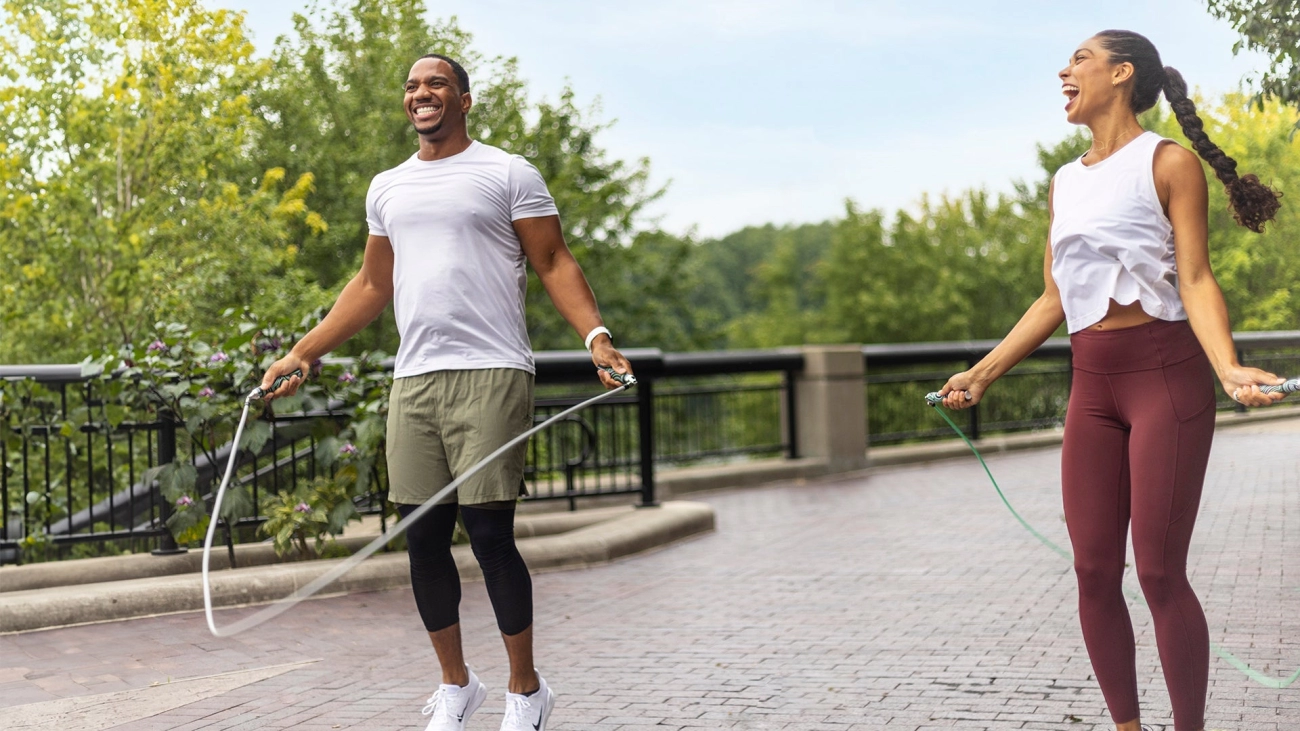
Starting a skipping rope workout can feel simple, but having a clear routine helps you build skill and stay consistent. Here’s a solid structure designed for beginners that mixes warm-up, skill practice, and cardio intervals efficiently.
Workout Breakdown
-
Warm up – 5 minutes
Get your muscles ready with light movements and stretches focused on ankles, calves, wrists, and shoulders. This helps prevent injuries and improves flexibility for skipping rope cardio routines.
-
Skill Practice – 5 minutes
Use this time to master basic jump rope techniques like single bounce jumps and alternate foot step jumps. Practicing these skills builds coordination and agility, key for better endurance.
-
Workout Intervals – 10 to 15 minutes
Structure your workout with short intervals followed by rest. For example:
- 30 seconds jumping
- 30 seconds rest
- Repeat for 5 rounds
During the jumping phase, alternate between:
- Alternate foot step jumps (like jogging in place with the rope)
- Basic high knees with rope (lift knees higher to boost heart rate)
- Single bounce jumps (both feet together, steady rhythm)
Progression Tips
- Gradually increase jump time from 30 seconds to 45 seconds, then 60 seconds as your stamina improves.
- Shorten rest periods to challenge your cardio fitness.
- Add variety by mixing in different jump styles or increasing jumping speed to keep the workout engaging.
- Track your jumps or calories burned to see improvements, which helps keep you motivated.
This beginner jump rope workout plan is designed to improve your fitness safely while building the skills to advance to longer or more intense skipping sessions. Stick with it consistently and you’ll see results in endurance, coordination, and calorie burn.
Tips to Stay Motivated and Track Progress in Your Beginner Skipping Rope Workout
Staying motivated while learning how to start skipping rope can be a challenge, especially for beginners. The key is to set clear goals and keep track of your progress using simple, effective methods. Here’s how you can stay on track with your beginner jump rope workout plan and make skipping rope a lasting part of your fitness routine.
Set Clear Goals for Your Skipping Rope Cardio Routine
- Time goals: Start with a target like jumping for 1 minute without stopping, then gradually increase.
- Jump count targets: Aim for a set number of jumps per session, such as 100 or 200, and increase as you improve.
- Calorie targets: Use apps or fitness trackers to see how many calories you burn and make goals based on weight loss or fitness.
Having clear, measurable targets keeps you motivated and gives you a sense of achievement.
Track Your Improvements Consistently
- Use a notebook or journal to log each workout’s duration, jump count, and how you felt.
- Try jump rope apps or fitness trackers designed for jump rope exercises for beginners — they often include timers and progress logs.
- Tracking helps you see small wins and keeps you accountable, which is great for maintaining motivation.
How Skipping Rope Fits Into Your Broader Fitness Routine
Skipping rope is incredibly versatile and works well alongside other workouts like strength training, running, or yoga. It’s a quick cardio blast that can be squeezed in anytime, anywhere. Combining skipping rope with other forms of exercise can help:
- Improve overall endurance and agility
- Support weight loss and muscle toning
- Add variety that keeps your routine interesting
Think of skipping rope as a powerful cardio tool that complements your larger fitness goals rather than replacing other workouts.
Be Patient and Stay Consistent
Like any new skill, skipping rope takes time to master. It’s normal to trip up or lose rhythm when starting. The best advice?
- Be patient with yourself as you build coordination and stamina.
- Stick to a regular schedule, even if it’s just 5-10 minutes a day.
- Celebrate progress, no matter how small—consistency leads to lasting results.
Remember, the real reward comes from staying consistent and watching your fitness improve over weeks and months.
By setting clear goals, tracking your progress, integrating skipping rope into your larger routine, and staying patient, you’ll find motivation stays high and your jump rope workouts get better and more effective every time.
Safety Tips and Common Concerns for Beginner Skipping Rope Workout
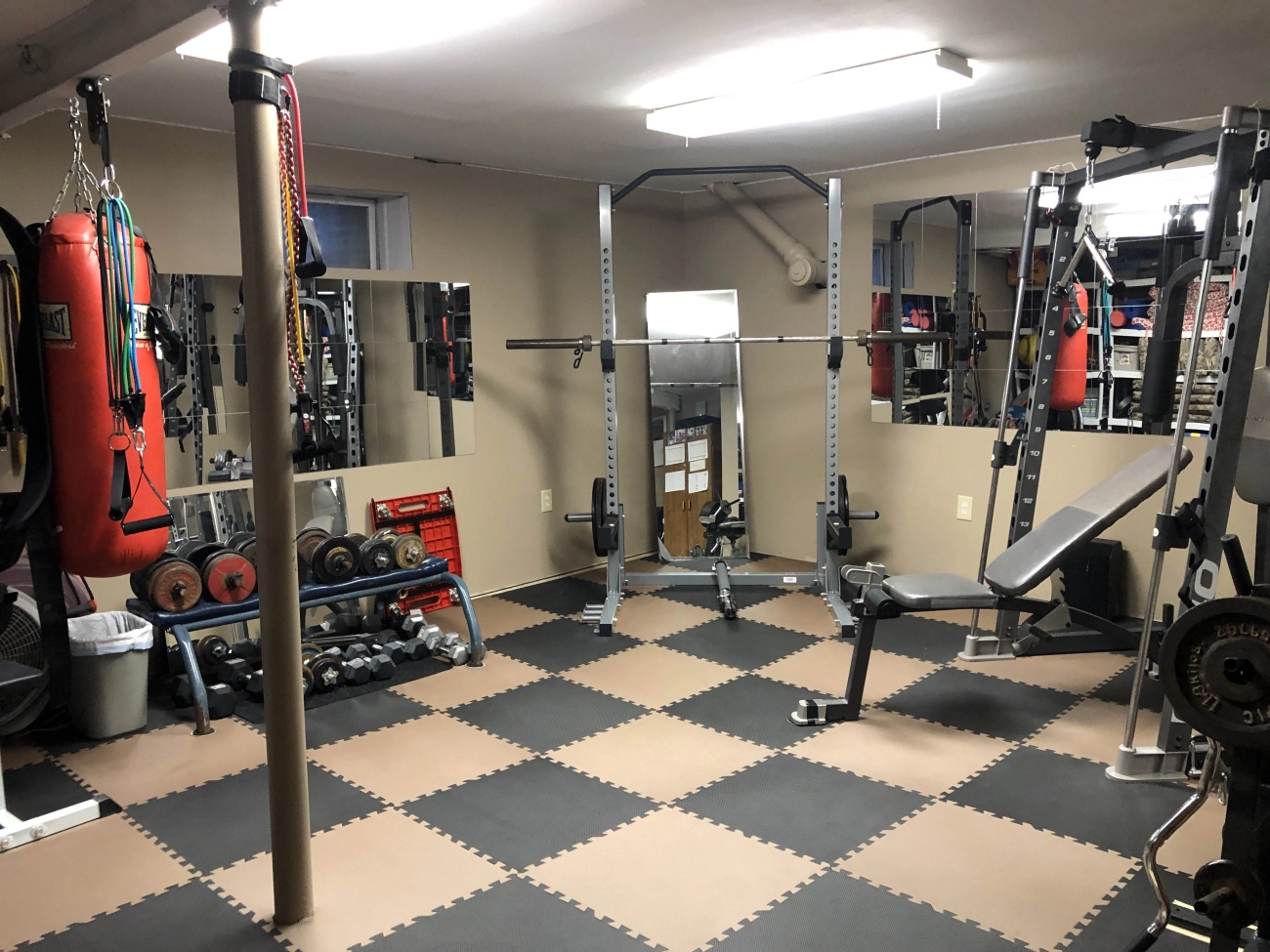
Starting a beginner skipping rope workout is exciting, but safety should always come first. Paying attention to surface choice, footwear, and how your body feels can help you avoid injuries and enjoy your jump rope cardio routine more.
Choose the Right Surface for Skipping Rope Exercises for Beginners
Skipping on the right surface makes a big difference:
- Flat, shock-absorbing floors like wooden gym floors, rubber mats, or carpeted areas reduce the impact on your joints.
- Avoid concrete, asphalt, or tile since they are hard and increase the risk of shin splints and other injuries.
- If you train indoors, a jump rope mat can be a game changer, minimizing strain and improving your jump rope cardio routine.
Wear Appropriate Footwear for Jump Rope Fitness Benefits
Good shoes protect your feet and support your workouts:
- Pick shoes with cushioned soles and good arch support.
- Running shoes or cross-trainers are both solid options for skipping rope cardio routines.
- Avoid flat shoes or bare feet, which don’t provide enough shock absorption.
Listen to Your Body and Prevent Overuse Injuries
Skipping rope is low-impact but repetitive, so it’s easy to push too hard. Watch for warning signs such as:
- Pain or persistent soreness in ankles, knees, calves, or shins.
- Swelling or unusual discomfort during or after workouts.
- If you feel tired, take a break—rest helps your muscles recover and prevents long-term injuries.
Know When to Rest or Seek Medical Advice
Skipping rope cardio routines are great for beginners, but overdoing it can backfire. Follow these guidelines:
- Rest for at least a day after feeling sharp pain or joint discomfort.
- If pain persists beyond a few days or worsens, don’t ignore it — consult a medical professional.
- Frequent dizziness, chest pain, or severe shortness of breath during skipping calls for immediate medical attention.
By focusing on these safety basics during your beginner skipping rope workout, you set yourself up for steady progress and fewer setbacks. Stay smart, listen closely to your body, and enjoy the many benefits of jump rope exercises for beginners.
Bonus Section Incorporating JumpRopeWholesale Products into Your Beginner Skipping Rope Workout
Choosing the right skipping rope can make a big difference in how much you enjoy and stick with your beginner skipping rope workout. At JumpRopeWholesale, we focus on providing high-quality ropes designed for beginners and all skill levels. Here’s how you can get the most out of your fitness journey with our products.
Best Beginner Friendly Ropes for Your Skipping Rope Cardio Routine
- Speed Ropes: Perfect for fast, smooth rotations that help build coordination and endurance without tiring your wrists. These ropes are lighter and ideal for cardio-focused jump rope exercises for beginners.
- Adjustable Ropes: These are great if you’re new and still dialing in your perfect rope length. Having a rope you can adjust means less hassle and more comfort as you learn proper skipping rope techniques.
- Weighted Ropes: Once you feel confident, adding a weighted rope can boost strength and calorie burn, giving your home workout with jump rope more intensity.
Check out our beginner rope collections with easy-to-follow sizing guides and comfortable grips made for long-lasting use.
Exclusive Offers and Warranty That Support Your Fitness Goals
We understand starting a skipping rope workout plan means investing in gear that lasts. That’s why JumpRopeWholesale offers warranties on quality defects and exclusive deals for first-time buyers. Keeping your rope durable and comfy ensures you stay motivated without worrying about replacing worn-out equipment.
How Quality Skipping Ropes Enhance Your Workout Experience and Longevity
- Durability matters: Cheap ropes can fray and snap quickly, interrupting your workout and causing frustration. High-quality ropes from JumpRopeWholesale are built to last through daily use.
- Comfortable grips reduce hand fatigue, letting you skip longer without pain or slipping.
- Smooth rotation improves rhythm and efficiency, making it easier to master jump rope techniques for beginners.
- A good rope adapts to indoor or outdoor use, so you can stay consistent no matter where you train.
Investing in a quality skipping rope not only supports your fitness routine today but also keeps you committed to a healthier lifestyle long-term.
Start your beginner skipping rope workout the right way with JumpRopeWholesale’s trusted ropes—designed to grow with your skills and fitness goals.

